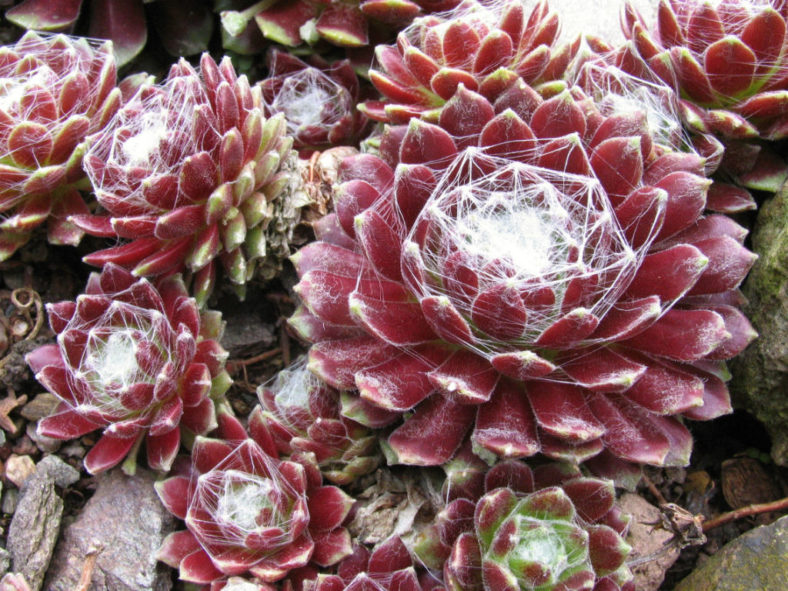Most succulents grow the most from spring to fall, and they like to take a break once winter rolls around. Therefore, watering should be reduced during their winter dormancy. However, some are actively growing and will need more attention.
Plants you keep inside or in a warm greenhouse during the winter (like Echeveria, Crassula, Kalanchoe, and other tender succulents) should be watered only enough to prevent the roots from dying off. This can range between once every couple of weeks and once every month.
Cold-hardy succulents (like Sempervivum, Rosularia, and Sedum) need even less water in the winter. When the temperatures are below 50°F (10°C), it is best not to water at all. Wet roots at low temperatures are the perfect conditions for rot.
If your succulents are winter growers (like Aeoniums), they will likely need more frequent watering.
Many plants suffer from desiccation in the winter. This is when a plant loses more water through evaporation than it can absorb through its roots. Before severely cold weather, we water evergreen plants well to help prevent damage (once the ground freezes, the plants cannot absorb water but continue to lose it). Do not do this with succulents. They like the opposite treatment. When freezing temperatures hit, you want the soil with succulents to be as dry as possible.

Of course, dry soil and winter are oxymorons (only possible if your plants are covered). So, winter is also when it is most important that your soil has excellent drainage.
Your reduced watering schedule should last until you see new plant growth in the spring. The weather may still be a little cold, but your succulent plants will appreciate more water as they start to grow again.
Source: youngs-garden.com
Links
- Succupedia: Browse succulents by Scientific Name, Common Name, Genus, Family, USDA Hardiness Zone, Origin, or cacti by Genus